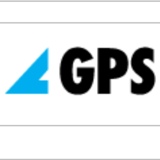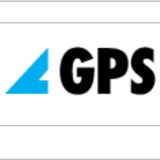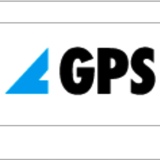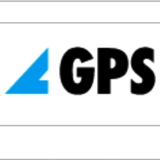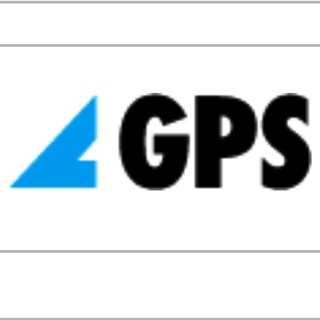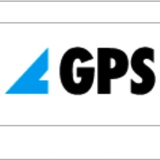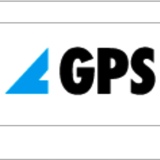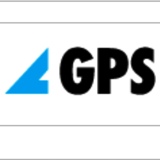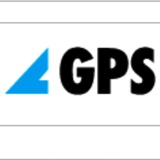Information
-
Assessment Number (Zone-F-Sequence Number)
-
Zone Number and Description
-
Site/building
General Help 1
-
Please report any errors, omissions or feedback on this template to andy.harrington@me.com
Latest revision:
Fixed errors with scoring - now scores one point for each "red" issue which increases risk
Fire Risk Assesssment
-
1. The aim of this fire risk assessment is to:
-
a) Identify readily combustible materials and highly flammable substances in the workplace
b) Identify any sources of heat which may cause a fire
c) Decide whether any staff and/or other people are especially at risk and consider the consequences of a fire on everyone present.
d) Assess the likelihood of a fire occurring and decide whether the existing fire safety measures are adequate or need improving, and
e) To take such action as may be needed to reduce the likelihood of fire -
2. The assessment should take into account the following points:
-
a) The work activity taking place.
b) The materials stored or used.
c) The contents of the workplace, including the furnishings
d) the construction of the workplace, including the internal linings.
e) The Size and layout of the workplace and:
f) The number of people who are likely to be present, whether as employees otherwise, (e.g. members of the public), and their ability to respond to an emergency. -
In most situations, and particularly for small areas, the assessment should be straightforward and simple, and nothing more than a careful examination of what could cause a fire what may make a fire more dangerous.
This means that, when using your judgement and knowledge of business, and your employees experience of the work activity, you will, in most cases, be able to make a realistic assessment without seeking outside assistance.
Carrying out the assessment
-
There are no hard and fast rules about how the assessment should be conducted. The important thing is that it should be both practical and systematic to ensure that the whole of the workplace is examined, every room or area, particularly those used infrequently.
For small workplaces it will usually be possible to assess the workplace as a whole, but in larger buildings it may be necessary to divide the workplace into rooms or a series of assessment areas using natural boundaries, e.g. process areas, offices, stores, workshops etc. Include any escape routes (corridors, stairways etc) in the assessment.
General Help 2
Guidance on completing the form
-
Take photographs to help clarify the hazard (or indeed the lack of hazard) as required in each section.
You must select "Yes", "No" or "N/A" for each category
The stages of a fire risk assessment
-
Stage 1 - Identify any fire hazard i.e. readily combustible materials, highly flammable substances and sources of heat.
-
Stage 2 - Identify any staff and other persons who are especially at risk
-
Stage 3 - Control ignition sources and combustible Hazards
-
Stage 4 - Having regard to the results of stages 1 to 3, decide whether the existing fire safety arrangements are adequate or require improving
-
Stage 5 - Establish or review the emergency/disaster recovery plans
-
Stage 6 - Establish or review the fire training provisions
-
Stage 7 - Action plans to address any deficiencies or improve the overall fire safety
Details of assessment
General Information:
-
Name and contact details of the responsible person for fire safety
-
Assessment Conducted by:
-
Conducted on
-
Review Period
-
Typically frequency would be 3 years, but where the area is subject to change or where there is limited experience this should be set to one year
Risk assessment should be reviewed where there is a change in equipment, people or process. If equipment is used for a different purpose, or is moved, the process should be re-assessed.
The Building:
-
GPS Site 1 Walsall Road Norton Canes Cannock, Staffordshire, WS119NS
-
GPS Aldridge Warehouse Bay Number 6 Stubbers Green Road Aldridge Walsall, West Midlands WS9 8BL
-
Floor Area (M2 per floor)
-
Floor Area (M2 total)
-
Brief construction details
The Occupants::
-
Number of people employed:
-
Number of people in the workplace at any one time:
-
Are there children, young persons, pregnant workers, disabled occupants, lone workers or workers in remote areas such as outbuildings?
Other relevant information:
-
Is there any previous history of fire loss in the premises (if yes give details)?
-
Are there any residential properties in, or attached to, the building?
-
Is there a prohibition notice in force (if yes give date of issue)?
-
Enter date
-
Is there a alteration notice in force (if yes give date of issue)?
-
Enter date
-
Is there a enforcement notice in force (if yes give date of issue, and date of when work is to be completed)?
-
Enter date of issue
-
Enter date by which completion is due
-
Is there there building or demolition work in the area or planned to be in the area?
Stage 1 - Identify the Hazards
A) Hazards related to combustible materials
-
1. Are there any highly flammable liquids, substances, or gases in use in the workplace?
-
List substances and quantities:
-
2. Are quantities of combustible waste, paper and packaging materials permitted to accumulate in the workplace?
-
List substances and quantities:
-
3. Are excessive quantities of combustible materials displayed or stored in the workplace?
-
List substances and quantities:
-
4. Are substantial areas of the walls or ceilings covered with flammable linings?
-
List substances and locations:
-
5. Are there any other readily combustible materials in the workplace that present a significant hazard? (E.g. timber, fabrics, plastics or foams)
-
List substances and quantities:
-
Action(s) required:
you must also identify who is responsible for the action(s)
Action(s)
-
Action
-
Responsibility:
B) Hazards related to sources of heat
-
6. Does the work activity involve processes such as incineration, moulding, welding, flamecutting or frictional heat?
-
List processes:
-
7. Is there oil present in the workplace?
-
7a. Is there any cooking with oil or burning of oil?
-
8. Is smoking permitted in the workplace?
-
9. Are there boilers, generators, ducts or flues?
-
10. Are there lightbulbs/fluorescent tubes and fittings near flammable materials?
-
11. Are there any visible faults on electrical equipment or wiring?
-
11a Are portable appliances tested as necessary?
-
12. Does the electrical equipment have "wander" or extension leads?
-
13. Are there any fixed electrical mains sockets damaged or not firmly secured to the wall?
-
14. Are there portable heaters present?
-
15. Are there multipoint adapters in electrical sockets?
-
16. Is arson a potential problem?
-
17. Are there any other sources of heat in the workplace?
-
List sources if heat:
-
Note: If any of the questions 1 to 17 have been answered "yes", you will need to determine if the risk of fire can be reduced by considering the possible options at stage 3
Ensure that all red answers have appropriate details and photographs in the appropriate notes section -
Comments related to Stage 1
-
Action(s) required:
you must also identify who is responsible for the action(s)
Action(s)
-
Action
-
Responsibility:
Stage 2 - Staff and other persons expecially at risk
Persons at risk
-
1. If staff work in remote areas of the workplace, or in areas of hi fire risk, are they sufficiently trained in the arrangements to ensure their safe evacuation?
-
i) Are there sufficient notices displayed on the action to take in the event of fire?
-
ii) Adequate arrangements to ensure an early warning of fire?
-
2. Do any staff have a mobility impairment, (i.e. difficulty in walking, using stairs or wheelchair bound)?
-
3. Are there adequate arrangements for the safe evacuation of persons identified above?
-
4. Are persons appointed to escort and assist their less able-bodied colleagues in an evacuation?
-
5. Are there any other employees who may need assistance during an evacuation?
-
6. Do visitors, contractors, or members of the public have un-escorted access to the workplace or other areas of the premises?
-
Comments related to Stage 2
-
Action(s) required:
you must also identify who is responsible for the action(s)
Action(s)
-
Action:
-
Responsibility:
Stage 3 - Control of ignition sources and combustible hazards
Control of ignition sources and combustible hazards
-
1. Can the levels of any significant combustible or highly flammable material be reduced?
-
Compensatory measure if answer is "No"
-
2. Are highly flammable materials, substances and liquids kept to a minimum in the workplace, and are stocks, not required for immediate use, stored safely in fire resisting stores away from sources of ignition?
-
Compensatory measure if answer is "No"
-
3. Are any compressed gas cylinders used in the building kept to a minimum and stored/secured safely?
-
Compensatory measure if answer is "No"
-
4. Is there a system in place for the regular collection and disposal of waste and rubbish?
-
Compensatory measure if answer is "No"
-
5. Can flammable wall and ceiling linings be removed or treated to reduce likelihood of flame spreading rapidly?
-
Compensatory measure if answer is "No"
-
6. Are there any structural features that could promote the spread of fire (e.g. service ducts, cable or pipe penetrations through walls, floors or ceilings)?
-
Compensatory measure if answer is "Yes"
-
7. Are sources of heat such as cooking appliances, welding etc, controlled by fire resisting enclosures or other suitable safeguards?
-
Compensatory measure if answer is "No"
-
8. Is adequate ventilation and extraction provided to minimise the buildup of flammable or explosive fume, vapour or dusts?
-
Compensatory measure if answer is "No"
-
9. Are ducts and flues inspected and maintained by competent persons at regular intervals?
-
Compensatory measure if answer is "No"
-
10. Is there an appropriate system for the monitoring of "hot work" (including a permit to work system) for maintenance workers and/or contractors etc?
-
Compensatory measure if answer is "No"
-
11. Does a competent person check the building fixed wiring installations at appropriate intervals?
-
Compensatory measure if answer is "No"
-
12. Are all electrical appliances and equipment adequately maintained and inspected by competent person at appropriate intervals?
-
Compensatory measure if answer is "No"
-
13. Are extension/wander leads and sockets protected by devices such as RCDs?
-
Compensatory measure if answer is "No"
-
14. Can tungsten filament bulbs be replaced with fluorescent or intrinsically safe fittings in areas where there is a possibility that combustible materials/substances/gases may be ignited?
-
Compensatory measure if answer is "No"
-
15. Where smoking is permitted, is there a smoking policy which provides for safe smoking areas and prohibition elsewhere?
-
Compensatory measure if answer is "No"
-
16. Is the prohibition of matches and lighters enforced in high-risk areas?
-
Compensatory measure if answer is "No"
-
17. Are suitable measures in place to protect and monitor against the risk of arson?
-
Compensatory measure if answer is "No"
-
Comments related to Stage 3
-
Action(s) required:
you must also identify who is responsible for the action(s)
Action(s)
-
Action:
-
Responsibility:
Stage 4 - Fire Safety Arrangements
Fire Safety Arrangements
-
1. Are there sufficient numbers of exit routes, of suitable width (minimum 1 m wide), to cover the number of persons present from every room and floor?
-
Compensatory measure if answer is "No"
-
2. Do all final exit doors lead to a place of safety in the open air?
-
Compensatory measure if answer is "No"
-
3. Are final exit doors of adequate width? (no less than 750 mm wide or 800 mm if required for wheelchair users)
-
Compensatory measure if answer is "No"
-
4. Are all exit routes clear and free from obstruction and checked each day?
-
Compensatory measure if answer is "No"
-
5. Are all exit signs clearly signed with the "running man" pictograms?
-
Compensatory measure if answer is "No"
-
6. Do all doors on the escape route open in the direction of travel?
-
Compensatory measure if answer is "No"
-
7. Are all internal fire doors labelled and kept normally closed?
-
Compensatory measure if answer is "No"
-
8. Are all escape routes clear and unobstructed and are all fire doors functioning correctly? (e.g. door opener bars, electromagnetic hold open devices etc)
-
Compensatory measure if answer is "No"
-
9. Is any alternative means of escape within a reasonable distance of travel ?
-
Compensatory measure if answer is "No"
-
10. Are staircases/vertical escape routes maintained in good condition, free from trip hazards and obstructions?
-
Compensatory measure if answer is "No"
-
11. Are all escape routes adequately lit and provided with emergency lighting?
-
Compensatory measure if answer is "No"
-
12. Where emergency lighting is installed, is it in working order and maintained regularly by competent person?
-
Compensatory measure if answer is "No"
-
13. Has provision been made for disabled person refuge? (Note that visitors could be disabled as well as employees)
-
Compensatory measure if answer is "No"
-
14. Is a means of fire alarm or other audible/visual system in place to effectively warn persons of fire?
-
Compensatory measure if answer is "No"
-
15. Are alarm systems routinely tested weekly and inspected and maintained by competent person?
-
Compensatory measure if answer is "No"
-
16. Are alarm call points clearly visible and unobstructed?
-
Compensatory measure if answer is "No"
-
17. Are sufficient fire action notices displayed?
-
Compensatory measure if answer is "No"
-
18. Have a suitable number of persons been appointed and trained to assist with any evacuation in the event of fire?
-
Compensatory measure if answer is "No"
-
19. Is there suitable and sufficient provision of portable fire extinguishers? and have hose reels been provided as necessary?
-
Compensatory measure if answer is "No"
-
20. Have all employees been trained and advised on the action to take in the event of a fire?
-
Compensatory measure if answer is "No"
-
21. Are records kept of all training provided and any practice evacuations conducted? (at least annually)
-
Compensatory measure if answer is "No"
-
22. Is all firefighting equipment inspected regularly and serviced annually by competent person?
-
Compensatory measure if answer is "No"
-
23. Is there any facility or provision to control smoke in the building? (i.e. tumescent strips on fire doors and/or smoke release vents or exhaust extraction)
-
Compensatory measure if answer is "No"
-
Comments related to Stage 4
-
Action(s) required:
you must also identify who is responsible for the action(s)
Action(s)
-
Action:
-
Responsibility:
Stage 5 - Emergency Action Planning
Emergency Action Planning
-
1. Is a building/premises plan attached to this assessment? (Photograph or reference to the document/ issue status is sufficient)
-
Compensatory measure if answer is "No"
-
2. Does the building/premises plan show the current situation and indicate:
-
a) Location of firefighting equipment?
-
Compensatory measure if answer is "No"
-
b) Self-closing fire doors?
-
Compensatory measure if answer is "No"
-
c) Fire alarm points?
-
Compensatory measure if answer is "No"
-
d) Emergency lighting?
-
Compensatory measure if answer is "No"
-
e) Fire segregation (i.e. protected stairwells, firewalls etc)
-
Compensatory measure if answer is "No"
-
f) Fire exits and exit routes?
-
Compensatory measure if answer is "No"
-
g) Assembly point(s)?
-
Compensatory measure if answer is "No"
-
3. Is there an emergency action plan/procedure in place?
-
Compensatory measure if answer is "No"
-
4. Does the plan/procedure cover:
-
a) The action required of all employees, visitors and other persons in the event of a fire?
-
Compensatory measure if answer is "No"
-
b) How persons will be warned of a fire?
-
Compensatory measure if answer is "No"
-
c) Where assembly points are located?
-
Compensatory measure if answer is "No"
-
d) Procedure for checking the building/premises has been evacuated and all persons accounted for?
-
Compensatory measure if answer is "No"
-
e) The duties and identities of persons with specific responsibilities in the event of a fire? (i.e. fire wardens/marshals, incident controller etc)
-
Compensatory measure if answer is "No"
-
f) Provision for disabled persons (i.e. assistance, refuge, communication etc)? (Note that visitors may be disabled)
-
Compensatory measure if answer is "No"
-
g) How the Fire service is to be called and by whom?
-
Compensatory measure if answer is "No"
-
h) Who is to liaise with the Fire service upon arrival?
-
Compensatory measure if answer is "No"
-
i) Provision of first aid kits to provide for possible injuries incurred during evacuation?
-
Compensatory measure if answer is "No"
-
Comments related to Stage 5
-
Action(s) required:
you must also identify who is responsible for the action(s)
Action(s)
-
Action:
-
Responsibility:
Stage 6 - Fire Training, Testing & Maintenance
A) Fire Training
-
Is there a fire training programme and does it cover:
-
a) How to raise the alarm?
-
Compensatory measure if answer is "No"
-
b) Evacuation procedures for everyone (including visitors, contactors etc) in the building/premises
-
Compensatory measure if answer is "No"
-
c) The location of exit routes and how to open exit doors?
-
Compensatory measure if answer is "No"
-
d) The location of fire evacuation assembly points?
-
Compensatory measure if answer is "No"
-
e) Where appropriate, how to stop machinery, processes and isolate supplies?
-
Compensatory measure if answer is "No"
-
f) When appropriate how to use firefighting equipment?
-
Compensatory measure if answer is "No"
-
g) Training for fire wardens/marshals in how to safely carry out a sweep of their area of responsibility to ensure it has been fully evacuated?
-
Compensatory measure if answer is "No"
-
h) The importance of general fire safety and good housekeeping?
-
Compensatory measure if answer is "No"
B) Testing and maintenance
-
1) Is the workplace adequately maintained?
-
Compensatory measure if answer is "No"
-
2) Is there weekly testing and periodic servicing of the fire detection and alarm systems?
-
Compensatory measure if answer is "No"
-
3) Is there monthly, six monthly and annual testing of the emergency lighting?
-
Compensatory measure if answer is "No"
-
4) Is there annual maintenance and testing of fire extinguishing equipment?
-
Compensatory measure if answer is "No"
-
5) Is there six monthly and annual testing of wet/dry risers?
-
Compensatory measure if answer is "No"
-
6) Is there weekly testing and periodic inspection of sprinkler installations?
-
Compensatory measure if answer is "No"
-
7) Are there routine checks of fire doors and final exit doors?
-
Compensatory measure if answer is "No"
C) Records
-
1) Are there records of : Fire drills, Fire training, Fire alarm tests, Emergency lighting tests, Routine maintenance and testing of fire protection systems?
-
Compensatory measure if answer is "No"
-
Comments related to Stage 5
-
Action(s) required:
you must also identify who is responsible for the action(s)
Action(s)
-
Action:
-
Responsibility:
-
Now review stages 1 to 6 and refer to the next section to determine the RISK CATEGORY for the building/area
Stage 7 - Actions
Action Plan
-
Review stages 1 to 6 and summarise any actions necessary to address deficiencies and minimise the risks of fire.
-
Action(s) required:
Action(s)
-
Action:
-
Responsibility:
-
Target Date
Final Stage - Risk Category
Overall fire risk category for building/area assessed
-
Determine the RISK CATEGORY based on the completion of stages 1 to 6
-
LOW Few flammable materials, little risk of fire outbreak and little risk of smoke spread
-
NORMAL Most workplaces will be of a NORMAL fire risk. They will generally contain quantities of combustible materials and sufficient sources of heat to take them out of the LOW fire risk category. Any such outbreak of fire is likely to remain confined or is likely to spread slowly thereby permitting persons sufficient time to escape to a place of safety..
-
HIGH High risk workplaces or parts of the workplace are those where there may be a serious risk to life. These include those workplaces that have substantial quantities of readily combustible solids, liquids or gases, that, when ignited, fire, heat and smoke fumes would spread rapidly. Undesirable building construction features and circumstances relating to occupants such as: population density, isolated workgroups, and disabled persons are factors that need to be considered.
